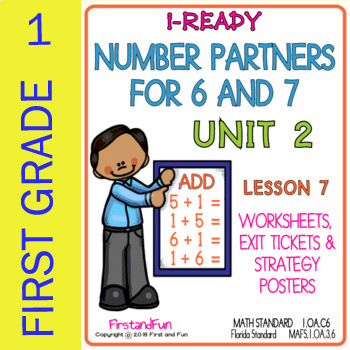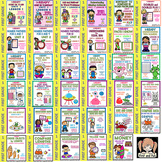NUMBER PARTNERS FOR 6 & 7 UNIT 2 LESSON 7 i READY MATH WORKSHEETS POSTERS EXIT
- PDF
- Easel Activity
What educators are saying
Also included in
- You can save by downloading this bundle instead of the individual packs. They are bundled by unit and include all lessons contained in that unit.This is extra practice for i Ready Math First as well as any other First or Second Grade math curriculum. This product is NOT endorsed by Curriculum AssociPrice $17.00Original Price $19.00Save $2.00
- You can save by downloading this bundle instead of the individual packs. They are bundled by unit and include all lessons contained in that unit. This Bundle contains ALL Extra Practice Packs for the ENTIRE year! All 35 Lessons are included.This is extra practice for i Ready Math First Grade as welPrice $88.00Original Price $112.50Save $24.50
Description
First Grade
NUMBER PARTNERS FOR 6 AND 7 UNIT 2 LESSON 7 i READY MATH WORKSHEETS POSTERS EXIT TICKETS COMMON CORE MAFS
This pack is a great addition to any Math Curriculum for kinder and first grade. There 2 Strategy Vocabulary Posters to post in the classroom. There are 23 differentiated worksheets total. Three of the worksheets are Exit Tickets with “I Can Statements”. One of the Exit tickets has an answer key, so you can place at a Math Center.
This is extra practice for i Ready Math First Grade as well as any other First or Second Grade math curriculum.
This file is an independent product and is not affiliated with, nor has been authorized, sponsored, or otherwise approved by Pearson®, Always Learning®, Scott Foresman®, Pearson Scott Foresman®, or enVisionMath®, Curriculum Associates®
Unit 2: NUMBER PARTNERS FOR 6 AND 7, Lesson 7 Topic: Number partners
ALSO AVAILABLE ARE UNIT 1 Lesson 1 Through Lesson 5 in MY STORE.
There will be more Units AND Lessons to come...
Remember this is intended for one classroom only. If you enjoy my product please consider following me on Teacher Pay Teachers store and rate my down load.
Please email me if you have any question. I can adjust any part of the product to meet the needs of your students.
svrdesign@earthlink.net
**Remember to leave feedback to earn your TPT Credits!**








